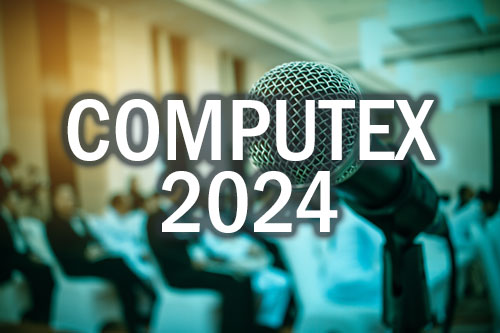The chief executives of both AMD and Supermicro used their Computex keynote addresses to describe their companies’ AI products and, in the case of AMD, pre-announce important forthcoming products.
Computex 2024 was held this past week in Taipei, Taiwan, with the conference theme of “connecting AI.” Exhibitors featured some 1,500 companies from around the world, and keynotes were delivered by some of the IT industry’s top executives.
That included Lisa Su, chairman and CEO of AMD, and Charles Liang, founder and CEO of Supermicro. Here's some of what they previewed at Computex 2024
Lisa Su, AMD: Top priority is AI
Su of AMD presented one of this Computex’s first keynotes. Anyone who thought she might discuss topics other than AI was quickly set straight.
“AI is our number one priority,” Su told the crowd. “We’re at the beginning of an incredibly exciting time for the industry as AI transforms virtually every business, improves our quality of life, and reshapes every part of the computing market.”
AMD intends to lead in AI solutions by focusing on three priorities, she added: delivering a broad portfolio of high-performance, energy-efficient compute engines (including CPUs, GPUs and NPUs); enabling an open and developer-friendly ecosystem; and co-innovating with partners.
The latter point was supported during Su’s keynote by brief visits from several partner leaders. They included Pavan Dhavulari, corporate VP of Windows devices at Microsoft; Christian Laforte, CTO of Stability AI; and (via a video link) Microsoft CEO Satya Nadella.
Fairly late in Su’s hour-plus keynote, she held up AMD’s forthcoming 5th gen EPYC server processor, codenamed Turin. It’s scheduled to ship by year’s end.
As Su explained, Turin will feature up to 192 cores and 384 threads, up from the current generation’s max of 128 cores and 256 threads. Turin will contain 13 chiplets built in both 3-nm and 6-nm processor technology. Yet it will be available as a drop-in replacement for existing EPYC platforms, Su said.
Turin processors will use AMD’s new ‘Zen5’ cores, which Su also announced at Computex. She described AMD’s ‘Zen5’ as “the highest performance and most energy-efficient core we’ve ever built.”
Su also discussed AMD’s MI3xx family of accelerators. The MI300, introduced this past December, has become the fastest ramping product in AMD’s history, she said. Microsoft’s Nadella, during his short presentation, bragged that his company’s cloud was the first to deliver general availability of virtual machines using the AMD MI300X accelerator.
Looking ahead, Su discussed three forthcoming Instinct accelerators on AMD’s road map: The MI325, MI350 and MI400 series.
The AMD Instinct MI325, set to launch later this year, will feature more memory (up to 288GB) and higher memory bandwidth (6TB/sec.) than the MI300. But the new component will still use the same infrastructure as the MI300, making it easy for customers to upgrade.
The next series, MI350, is set for launch next year, Su said. It will then use AMD’s new CDNA4 architecture, which Su said “will deliver the biggest generational AI leap in our history.” The MI350 will be built on 3nm process technology, but will still offer a drop-in upgrade from both the MI300 and MI325.
The last of the three, the MI400 series, is set to start shipping in 2026. That’s also when AMD will deliver a new generation of CDNA, according to Su.
Both the MI325 and MI350 series will leverage the same industry standard universal baseboard OCP server design used by MI300. Su added: “What that means is, our customers can adopt this new technology very quickly.”
Charles Liang, Supermicro: Liquid cooling is the AI future
Liang dedicated his Computex keynote to the topics of liquid cooling and “green” computing.
“Together with our partners,” he said, “we are on a mission to build the most sustainable data centers.”
Liang predicted a big change from the present, where direct liquid cooling (DLC) has a less-than-1% share of the data center market. Supermicro is targeting 15% of new data center deployments in the next year, and Liang hopes that will hit 30% in the next two years.
Driving this shift, he added, are several trends. One, of course, is the huge uptake of AI, which requires high-capacity computing.
Another is the improvement of DLC technology itself. Where DLC system installations used to take 4 to 12 months, Supermicro is now doing them in just 2 to 4 weeks, Liang said. Where liquid cooling used to be quite expensive, now—when TCO and energy savings are factored in—“DLC can be free, with a big bonus,” he said. And where DLC systems used to be unreliable, now they are high performing with excellent uptime.
Supermicro now has capacity to ship 1,000 rack scale solutions with liquid cooling per month, Liang said. In fact, the company is shipping over 50 liquid-cooled racks per day, with installations typically completed within just 2 weeks.
“DLC,” Liang said, “is the wave of the future.”
Do more:
- Watch the video of Lisa Su’s Computex keynote



